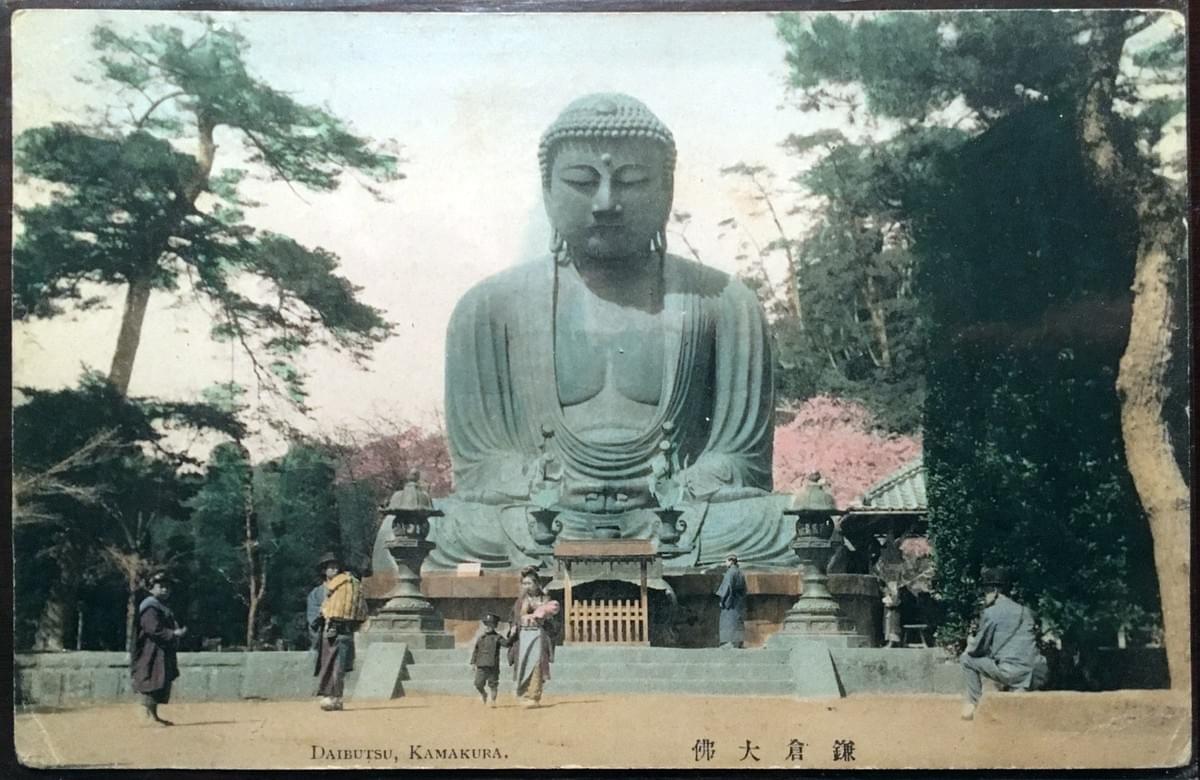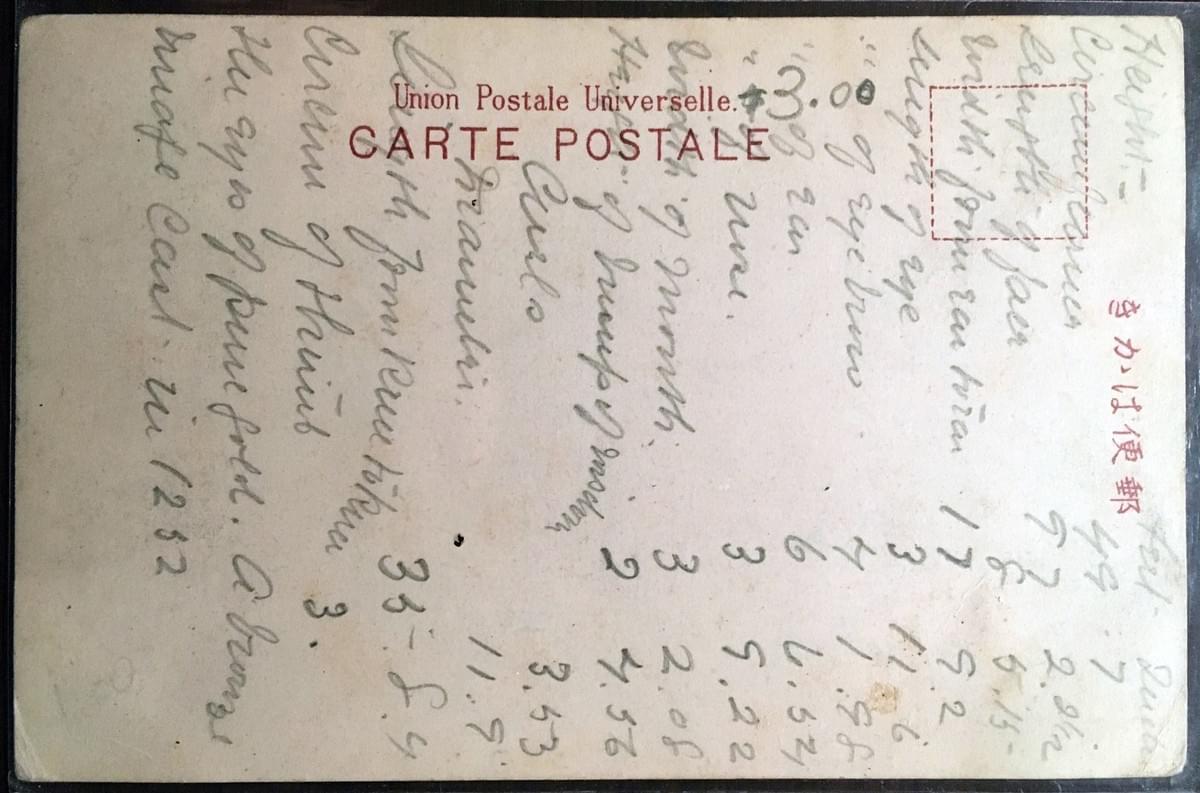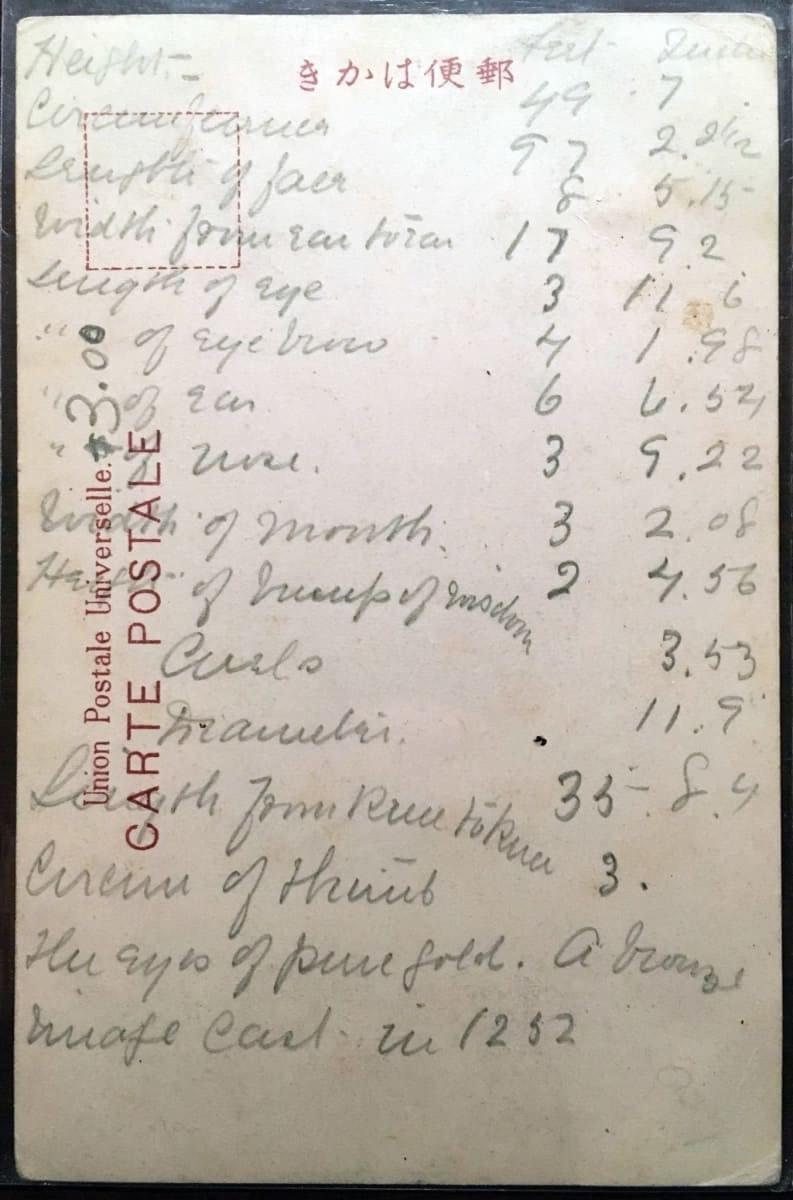Materiality speaks!
The physical characteristics of a postcard can tell us quite a lot about its creation context, its intended audience and circulation. For instance, physical dimensions can point to both adherence to industrial production standards and international postal conventions.
The image side reveals information about imaging and printing technologies dominant at the time, in addition to subject information of course. While there are many photographic processes to fix an image, there are fewer processes used in the photo-mechanical reproduction of postcards that were practical enough to supply the growing demand of this communication media.
The reverse side can reveal or lead to other information, such as clues as to the publisher and when the postcard was made. They often contain additional information such as notes, messages, addresses, postage stamps and cancels with dates, times and locations.
In short, a postcard, mailed or not, is not just a window into the past in terms of the image on the front, but can in fact be a portal into the context of its creation. Its many layers offer a look into the artistic, commercial, industrial, political, social and technological facets of its production, usage, circulation and distribution. Its a bit like those ice core samples scientists drill for in Antarctica.
So, let's have a more careful look at this postcard. What can it tell us?

On the recto side we see a coloured image of a massive outdoor statue of a seated man. Not only is the image of a landmark important enough to put on a postcard, but it also depicts people people in the act of touring the site.
Is this a real photo postcard (RPPC) or a photomechanical reproduction? This is a mass-produced photomechanical reproduction using an ink-on paper planographic printing technique known as the collotype, easily identified for its reticulation pattern. Collotype images do not fade as easily, but their paper support tends to be acidic and yellows the paper with time.
RPPCs tend to be thicker and stiffer than regular postcards because of their multi-layer construction, made up of a substrate, baryta and gelatine emulsion. They suffer from the same deterioration agents as other photographs, such as fading and silver mirroring.
What about the colour? It was applied rather quickly by hand using water colours. Coloured areas do not faithfully register on all the subject areas correctly, as the blue faces on the figures at either side of the foreground reveal.
What is the statue of and where is it? A caption at the bottom of the card reads Daibutsu, Kamakura. in English. The fact that this card is labeled in two languages, indicates its aimed at local and foreign audiences. It is important that we know exactly what and where this is.
What does Daibutsu mean? The dictionary tells me that it means Great Buddha. This statue is a very famous tourist site to this day. The statue is made of cast bronze. A quick online search reveals that Kamakura is about an hour south south-west from Yokohama city in eastern Japan. This is of great importance in the 19th Century. Kamakura is an important city with a long history and many cultural landmarks.
What are the postcard's dimensions? It measures 910 mm high by 1400 mm wide. That seems like an odd size...or is it? In inches it is exactly 3 1/2 in by 5 1/2 in, a much more even number ratio...hmmm...

Why is this Japanese card sized in non-Japanese units? An important clue to answering that question is the letterpress inscription on the back - or verso - of the card. (along with other very interesting details).
What is printed on the back? A letterpress inscription in burgundy ink reads "Union Postale Universelle" this is French for The Universal Postal Union. We also see two more things in that burgundy ink, first a square outlined in dashed lines which indicates where to place the postal stamp, and below that, Japanese script that reads hakaki (postcard).
Why is it in French? The UPU is an international body founded in France, that has been governing international postal regulations of member countries since the second half of the 19th century to today. It sets the rules for postage prices as well as the standard dimensions for different pieces of mail. We can surmise then, that by using French the manufacturer is confirming the UPU's authority and the card is complying with its dimension regulations to facilitate easy posting around the world. We also see that the back of the postcard is also undivided, and this is another UPU regulation that helps us date an unused postcard.
Why is the back undivided? An undivided back helps indicates that this postcard was made prior to the introduction of regulations that allowed the sender to write the message on the back of the card. For undivided cards the back is reserved for the recipients' name and address only.

What's writen on the back of this card? Well, will you look at that! The back of the card is filled with handwritten notes that on close inspection reveal not a message, but rather a detailed list of dimensions (in feet and inches) of the Great Buddha statue, and when it was cast, 1252!
The $3.00 was written by the last seller. $3 dollars in 1905 would be about $80 today. I don't think a postcard like this one would ever command such a price then. That leads us to another question:
How much would this card have cost back then? While there is no indication on the card itself, postcards at this time (circa 1905) cost about the same as the postage stamp required to post them. Stamps on other cards of this time period cost 1 to 1 1/2 sen. A Sen is 100th of a Japanese yen.
OK, so how much is one sen then? At that time one Yen exchanged to about 50 cents of a dollar, which means that one sen would be a half penny.
Let's recap the facts about this postcard based on initial observations:
- It measures 1400mm long by 900mm wide.
- Printed in ink
- Colour tints have been applied to the monochromatic image on the front.
- A bilingual (English/Japanese) caption on the front locates the place depicted in the image.
- The hand-written text on the verso provides measurements for the statue.
- Printed multilingual text identifies the type and purpose of this paper-based object.
- This Japanese card dates from Period I (October 1900 to March 1907).
Do you have any other questions about this card that could be answered by observing its materiality? Drop me a line!